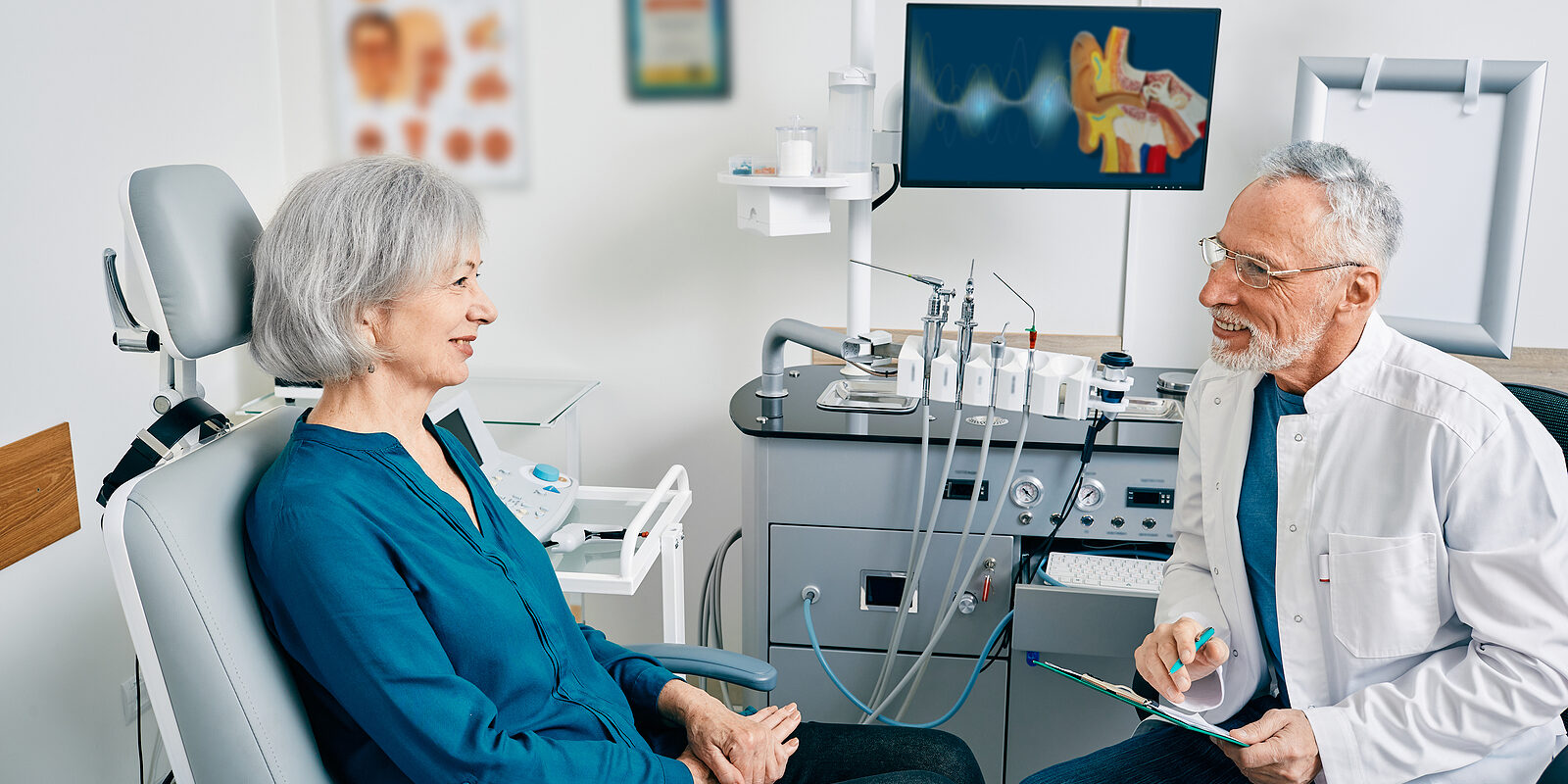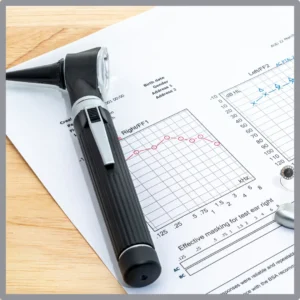What to Expect in the Hearing Evaluation Process

It’s National Protect Your Hearing Month: Get a Hearing Test!
Are you feeling a bit nervous about your upcoming hearing test? It’s completely normal to feel some anxiety before your appointment. However, knowing what to expect can help you feel more at ease. The hearing evaluation process is straightforward, noninvasive, and an important part of prioritizing your hearing health. Let’s walk through the steps of the hearing evaluation process so you can feel fully prepared.
The Initial Hearing Evaluation Process
Before any tests are conducted, your hearing healthcare provider will take some time to get to know you and your hearing history. This stage is often familiar and involves filling out paperwork and discussing your medical history, family history of hearing-related issues, and the symptoms you’re currently experiencing. Your provider will also ask about your lifestyle, such as your work, social life, and hobbies. These details can help uncover potential causes of hearing loss and determine the best course of treatment for you.

Ear Examination: A Closer Look
After the intake process, your provider will perform an ear inspection using an otoscope—a small device with a light that allows them to look inside your ear canal and check your eardrum. This step helps identify any obstructions like earwax buildup or physical issues like a damaged eardrum, which could be contributing to conductive hearing loss. Conductive hearing loss occurs when sound waves are blocked from traveling through the ear, and it’s often treatable.
If any obstructions like earwax are found, your provider may clean your ears before moving forward with further tests.
Hearing Tests: Measuring Your Hearing Abilities
Hearing tests are a key part of the hearing evaluation process and are designed to assess your ability to hear sounds across different frequencies and volumes. These tests not only determine whether you have hearing loss but also provide essential details about the type and degree of loss. Your hearing healthcare provider will use several methods to comprehensively understand your hearing abilities.
Pure Tone Audiometry Test
Pure tone audiometry is one of the most common and effective ways to measure hearing. During this test, you will be seated in a soundproof room and asked to wear headphones. Your provider will play a series of tones at various pitches and volumes. These sounds will range from very soft to louder tones, allowing your provider to identify the quietest sounds you can hear in each ear. Every time you hear a sound, you will indicate this by raising your hand, pressing a button, or responding verbally. This test measures your hearing sensitivity and helps pinpoint which frequencies are most challenging for you to hear.
Speech Audiometry Test
In addition to pure tones, speech audiometry is another important test your provider may use. Instead of tones, this test measures your ability to hear and understand spoken words. You’ll listen to a variety of speech sounds and words at different volume levels, sometimes with background noise to mimic real-world listening environments. This test is especially useful because it can reveal difficulties you may have in processing speech, particularly in noisy situations. It helps determine how well you can understand speech, which is crucial in daily interactions like conversations and phone calls.
Bone Conduction Test
Your provider may conduct a bone conduction test to further understand the cause of your hearing loss. In this test, a small device is placed behind your ear, sending vibrations directly through the bones in your skull to your inner ear. This bypasses the outer and middle ear, allowing your provider to see whether your hearing loss is due to a blockage or a problem within the inner ear itself. By comparing the results of this test with the pure tone test results, your provider can better identify whether your hearing loss is conductive, sensorineural, or a combination of both.
Tympanometry Test
Another valuable test in the hearing evaluation process is tympanometry, which measures how well your middle ear is functioning. This test involves placing a small device in your ear that changes the air pressure while emitting a sound. This allows your provider to assess how your eardrum responds to changes in pressure, providing insight into whether there’s fluid, earwax buildup, or other conditions that may be affecting your hearing. Tympanometry can help diagnose issues such as ear infections, eardrum perforation, or dysfunction in the tiny bones of the middle ear.
Otoacoustic Emissions (OAE) Test
For a more detailed look at the inner ear’s function, your provider may use an otoacoustic emissions (OAE) test. This test measures the activity of the hair cells inside your cochlea, which play a critical role in hearing. During the test, a small probe is placed in your ear, producing sounds that cause your cochlea’s hair cells to vibrate. These vibrations create their own sound, known as otoacoustic emissions, which the device records. If no emissions are detected, it can indicate damage to the hair cells, pointing to sensorineural hearing loss. This test is particularly useful for identifying early-stage hearing loss or determining whether your inner ear is functioning properly.
Comprehensive Results for Tailored Solutions
Each of these hearing tests plays a vital role in building a complete picture of your hearing health in the hearing evaluation process. Together, they provide the information needed to determine not only whether you have hearing loss but also the type and extent of it. This comprehensive evaluation allows your hearing healthcare provider to recommend the most appropriate treatment options, ensuring that you receive personalized care that meets your specific needs.
Understanding your hearing abilities is the first step toward improving your hearing and overall quality of life.

Understanding Your Results
Once the tests are complete, your results will be displayed on an audiogram. This chart shows your hearing levels in both ears and highlights any hearing loss. Your provider will explain the results, including the type of hearing loss you have—whether it’s conductive, sensorineural, or mixed—and the severity of the loss. They will also go over sounds and speech that may be more difficult for you to hear.
If hearing loss is detected, your provider will discuss treatment options, which may include hearing aids. Hearing aids are devices that help amplify and process sound, improving your ability to hear and communicate.
Next Steps: Follow-Up and Treatment
If you and your hearing care professional decide on hearing aids to treat hearing loss, you may need to return for a follow-up appointment. During this visit, your provider may take impressions of your ears for custom-fit hearing aids. You’ll also have a fitting appointment so an audiologist can program and adjust your devices to meet your specific needs. Your provider will show you how to care for and use your new hearing aids. This way, you’ll get the most out of them.

Take Control of Your Hearing Health
The hearing evaluation process is a crucial first step toward better hearing health. It not only helps identify hearing loss but also provides a roadmap for effective treatment. Whether you need hearing aids or additional testing, taking action early can significantly improve your quality of life.
Don’t let anxiety hold you back from better hearing. Contact Stanford Hearing today to schedule a free hearing evaluation and take the first step toward hearing more clearly!
